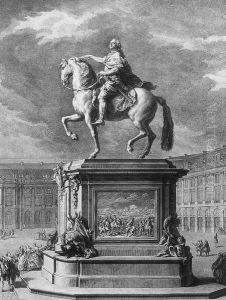Nicolas-Gabriel Dupuis Paintings
Nicolas-Gabriel Dupuis was a prominent French engraver, born in 1698 in Paris, France. He was part of the Dupuis family, which included several notable artists and engravers of the time, contributing significantly to the French art scene during the 18th century. Dupuis is particularly recognized for his mastery in the art of engraving, a process that involves incising a design onto a hard, usually flat surface, by cutting grooves into it. This technique was a crucial method for reproducing images before the advent of modern printing technology.
Dupuis' work was characterized by its precision and attention to detail, traits that made him a sought-after engraver for portraits and historical scenes. He was adept at capturing the nuances of facial expressions and the intricacies of clothing and background, bringing a lifelike quality to his engravings that was highly valued at the time. His contributions to the art world extended beyond his own creations, as he played a significant role in training the next generation of engravers, thus ensuring the continuation of high-quality craftsmanship.
Throughout his career, Dupuis received commissions from some of the most influential figures in French society, including royalty and members of the aristocracy. These commissions often involved creating engravings based on paintings by renowned artists, thereby making the works of these artists more accessible to the public. Dupuis' ability to translate the essence of a painting into an engraving was unmatched, earning him a reputable place among the artists of his time.
Nicolas-Gabriel Dupuis passed away in 1771, leaving behind a legacy that would influence French engraving for years to come. His dedication to his craft and his impact on the art of engraving are remembered as significant contributions to the world of art. Dupuis' works continue to be studied and admired for their technical skill and artistic beauty, cementing his status as a key figure in the history of French art.
